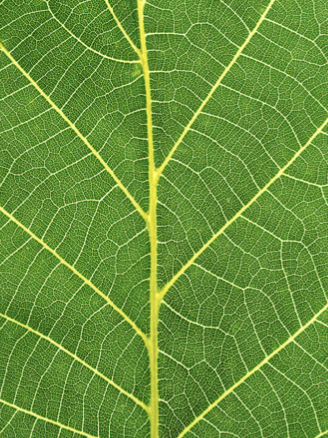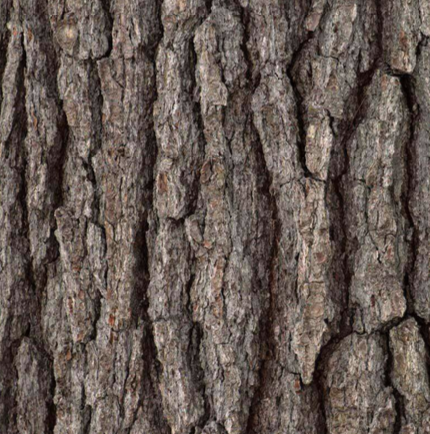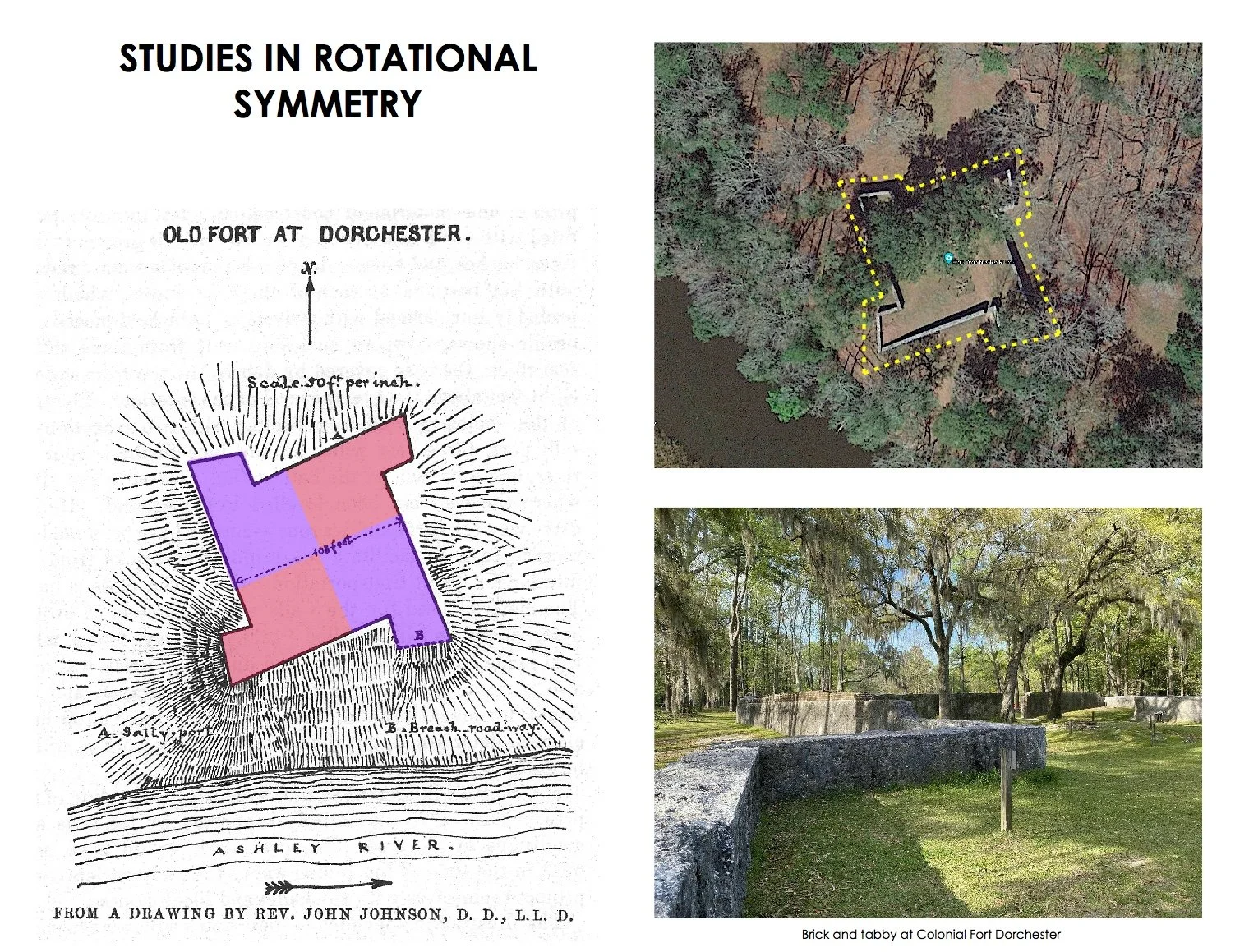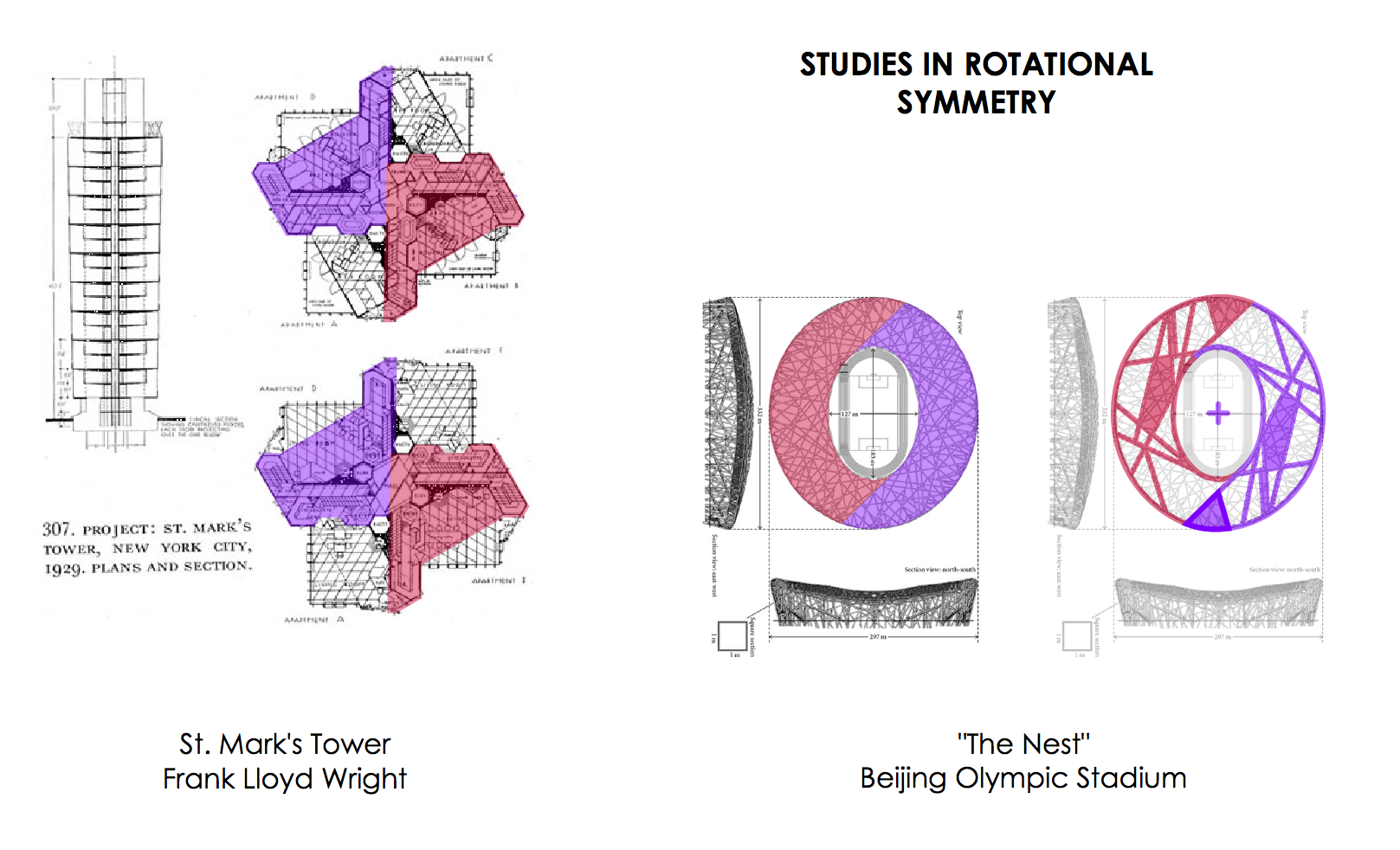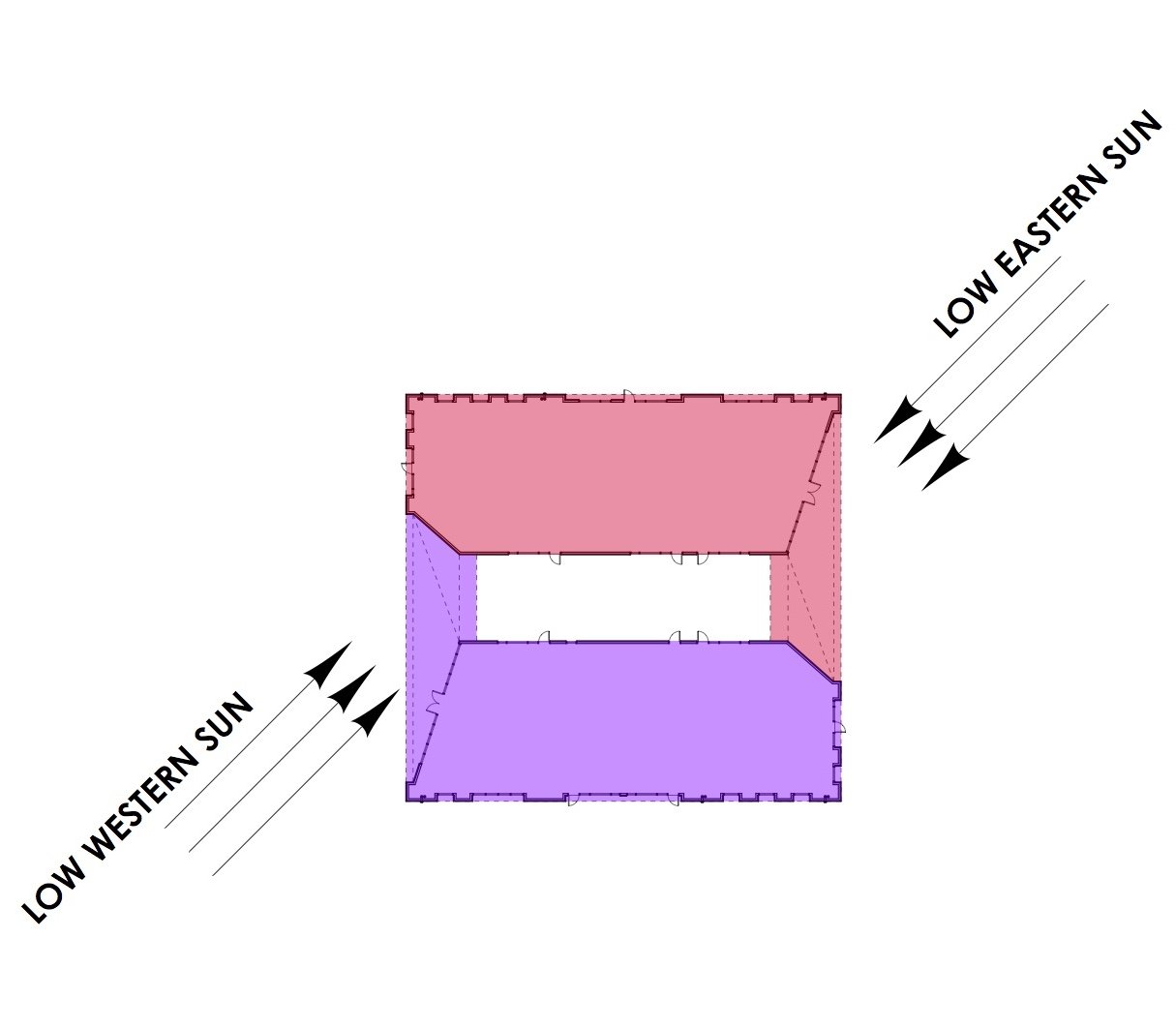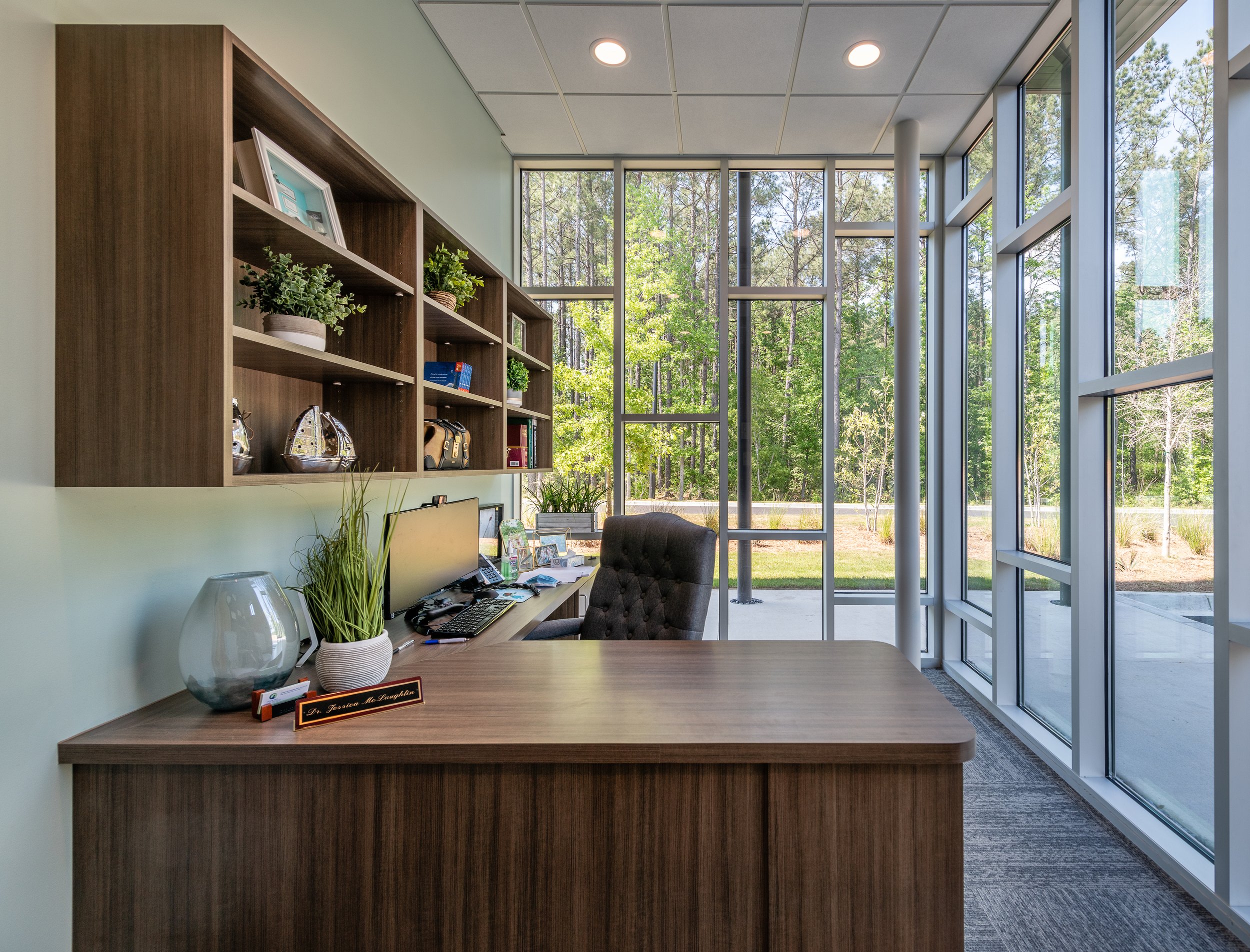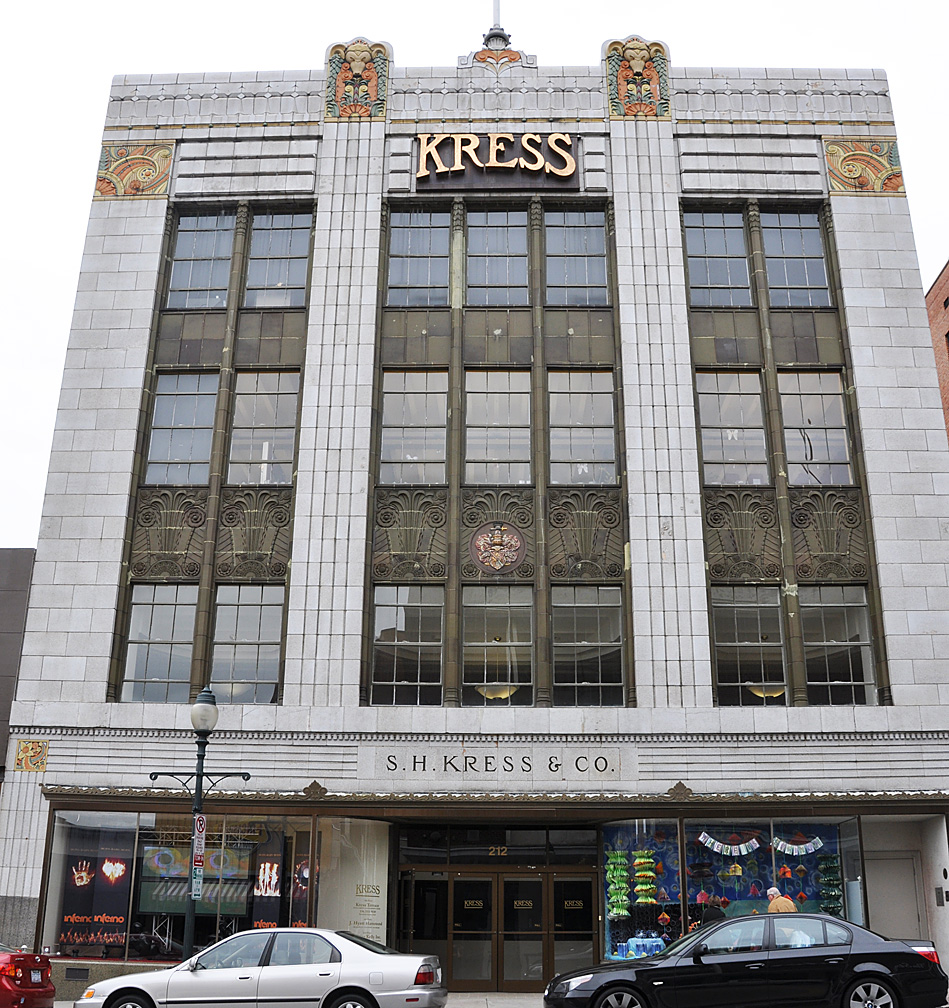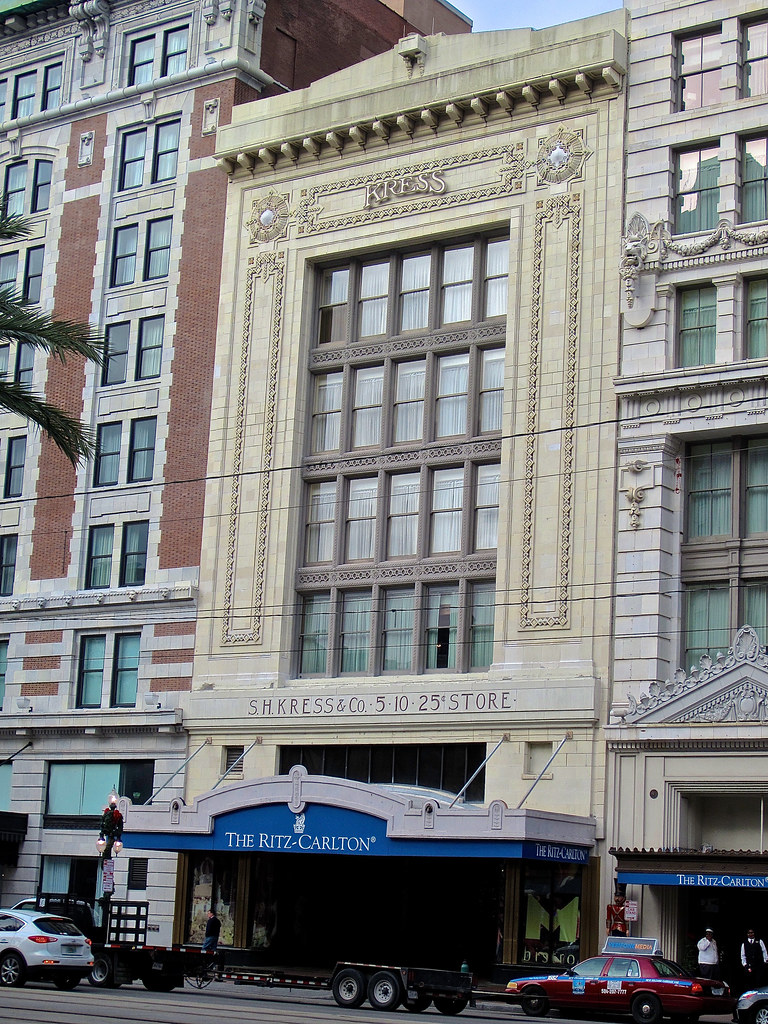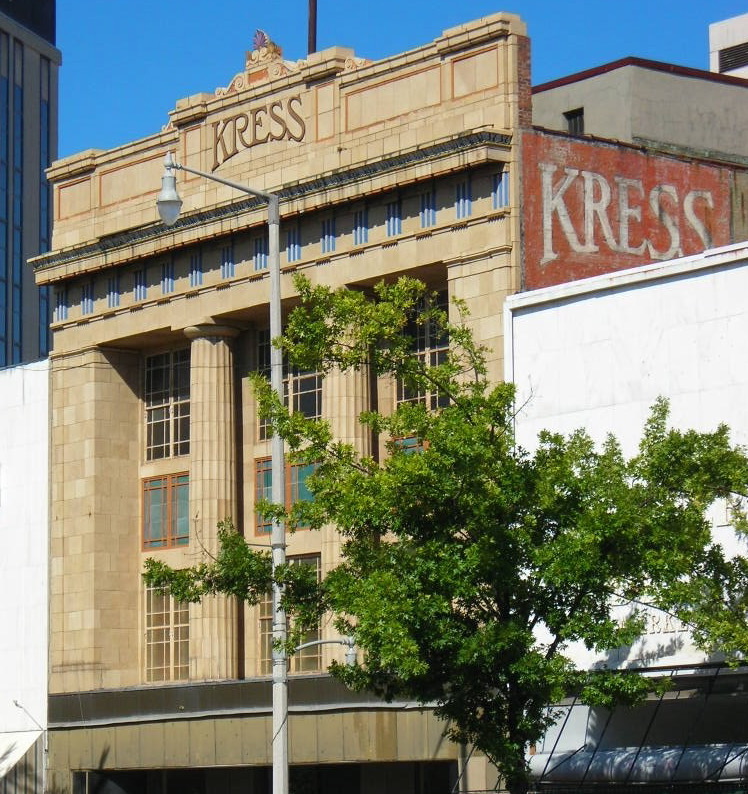The design approach for this 11,000sf office building responded to the historic 49” Live Oak tree on the property, both literally and figuratively. The “L” shape footprint wraps the tree allowing for a strong visual connection for the building occupants and a passive outdoor gathering area under its limbs. The building facade explores repetition of understory trees through the repeating brick pilasters and weaves abstract patterns and textures of bark and leaves into the detailing.
Aiding in the study of biophilic design, the prominent tree on the property served as the main driver of decisions related to the site design, landscape architecture and building design. An effort was made to ensure that the building and its occupants be able to engage with the tree in a meaningful way. This engagement began with a metaphor of the canopy trees and the understory trees. As the proverbial understory trees, the building attempts to embody patterns, textures, rhythms, and filtered light as a way to connect the building and those inside to the natural landscape while preserving the historic tree.
The resultant design evokes a solidness and sturdiness as well as vast amounts of glass allowing all of the interior workspaces to be visually connected to the outdoors. Chevron details in between the brick pilasters are derived from patterning found in nature while wood elements bring a warmth to the structure.
General Contractor: Harbor Contracting
Civil Engineer: Seabrook Engineering
Landscape Architecture: The Tomblin Company
Architecture: Rush Dixon Architects
Structural Engineering: ADC Engineering
MPE Engineering: Charleston Engineering



